These Are the World's Next Great Food Cities
We sent nine writers to scour the globe for the best emerging cities for food lovers. Here are the seven big cities and five smaller locales that wowed them (and us!).
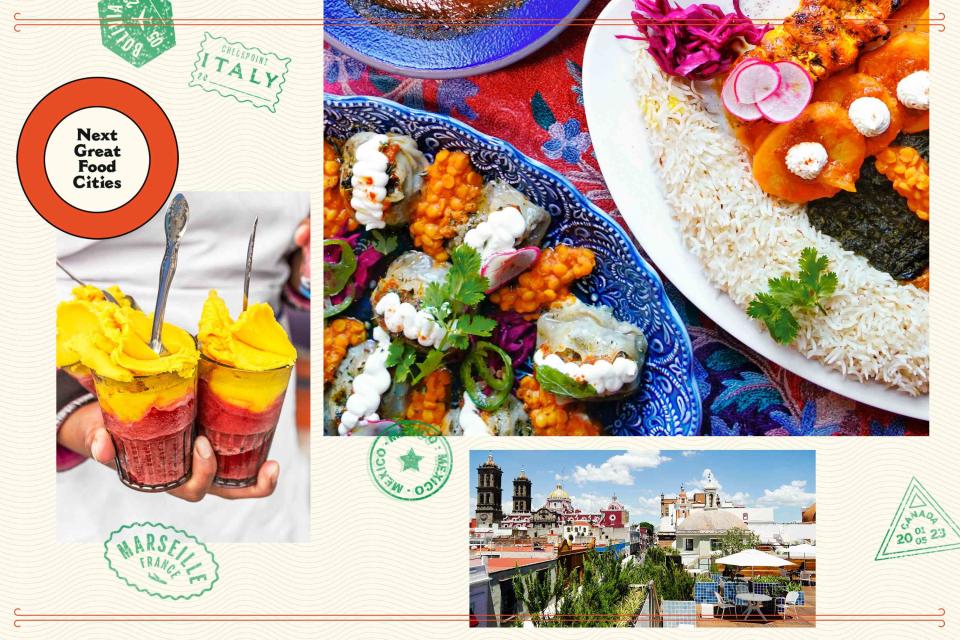
Food & Wine / Photo Illustration by Sarah Maiden / Clockwise from top left: Julien Capmeil; Courtesy of Afghan Kitchen; Mariano Fernandez
The past year has been a thrilling one for travelers and food-lovers as the world and its restaurants slowly recover from the pandemic-induced challenges and burdens placed on them during the last few years. While it’s true that many restaurants closed for good, the growth of the hospitality industry in cities worldwide in 2022 and early 2023 has been both staggering and heartening. It is on the cresting wave of this resurgence that Food & Wine sent writers across the globe to discover the next emerging cities for food lovers. In Japan, Yukari Sakamoto delved into the vibrant food culture of Kanazawa, a city quieter than Tokyo but with seafood restaurants to rival the capital; in France, Sarah Souli immersed herself in Marseille, whose food scene is being reshaped by women and immigrants; while in Italy, Federico Cesare de Voila argues that, for the first time ever, Venice is emerging as a truly great food destination. This package celebrates creativity, innovation and deliciousness in seven cities and five smaller ones with food scenes worth traveling for in 2023. Taken together, we hope our 12 Next Great Food Cities around the world inspire your next year of delicious travel. — Melanie Hansche
Kanazawa, Japan
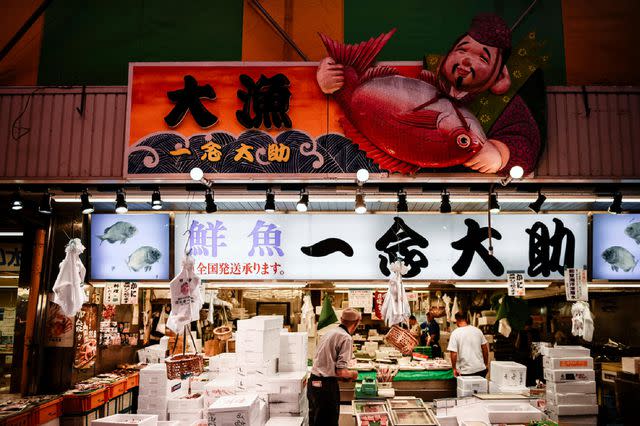
Nanno Betts
The historic Omicho Market is the place to sample the freshest seafood at the myriad food stalls and restaurants.Smaller, easier to get around, and not as packed as Tokyo, this charming seaside city offers the best seafood in Japan.
On the Sea of Japan, charming Kanazawa is an exciting destination for food lovers. The seafood here is fresher than what is sold at the world-famous Toyosu Market in Tokyo: It can take a day to arrive at the country’s capital, whereas in Kanazawa, diners eat whatever was caught that morning, like crab, white shrimp, and fatty nodoguro (blackthroat seaperch).
One of the best places to enjoy seafood is at the 300-year-old Omicho Market, which opens at 9 a.m. On the second floor, away from the crowds, Hirai Ichiba-kan specializes in kaisendon, seasonal sashimi over a large bowl of vinegared rice. Or grab a seat at Maimon Sushi, an upscale kaitenzushi (conveyor-belt sushi restaurant) famous for getting deliveries multiple times a day. Busy cooks oversee a large hot pot of oden (fish cakes and vegetables simmering in a delicate broth) at the boisterous Kuroyuri.
Restaurants, cafés, and bars from newcomers have made the city even more exciting to visit. Curio Espresso is owned by an American from Seattle and his Japanese wife. They source beans from a local roaster—a first for Kanazawa. Naomichi and Seigi Karasawa, the amiable French-Japanese brothers at Furansu Cocktail Bar, have raised the level of craft cocktails in the city. (Try the aromatic yuzu sour with housemade spirits, which are on display behind the bar.)
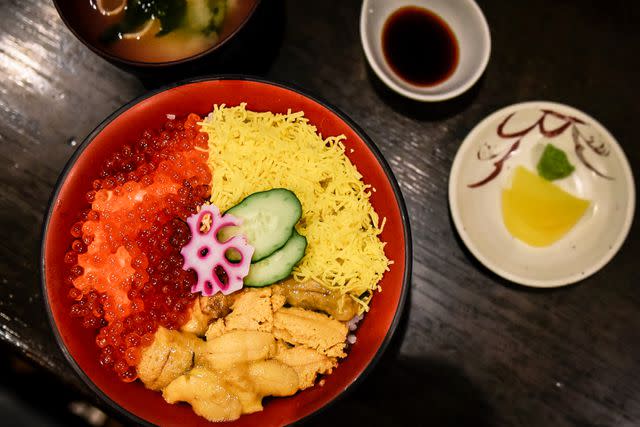
Nanno Betts
A bowl of rice topped with a variety of sashimi at Omicho Market.Kanazawa is known as a thriving center of folk art, and craftspeople and food artisans abound in the city. Fourth-generation wagashi (confectionery) chef Kazu Nakashima’s daifuku mochi are filled with a sweet white-bean paste and seasonal fruit like figs or mandarin oranges at his namesake restaurant in the Higashi Chaya District. Pair his traditional sweets with a matcha latte. A blue bowl repaired in the gold kintsugi style is used for the signature potato salad at Plat Home. Peruse the seasonal menu for dishes like persimmons, dates, and nuts in a tofu dressing.
Other hyperlocal ingredients make their way into the onigiri rice balls at Soramiso, which are stuffed with things like pickled mackerel and fugu (puffer fish) roe with cream cheese. A hearty bowl of their tonjiru, miso soup with pork and chunky vegetables, is the ultimate comfort food to fuel an afternoon of sightseeing. The region also has a rich history of staples such as sake, soy sauce, miso, fish sauce, and sea salt. Hip shop Fukuro—think Aesop but for condiments—has enticing seasonings such as chicken curry miso and Parmesan salt and pepper.
Before leaving Kanazawa, make sure to visit historic sites such as Kenrokuen Garden and the Nagamachi Samurai District, as well as that new architectural stunner, the Ishikawa Prefectural Library. More than likely, you will catch the Shinkansen (bullet train) back to Tokyo, where dining on board is a civilized ritual. Select a portable bento meal and a small bottle of sake for the journey at Hyakubangai Anto, a mall inside the train station with shops stocked with prepared foods. Better yet, linger over a flight of sake at Kanazawa Jizakegura before jumping on the train. — Yukari Sakamoto
Tainan, Taiwan
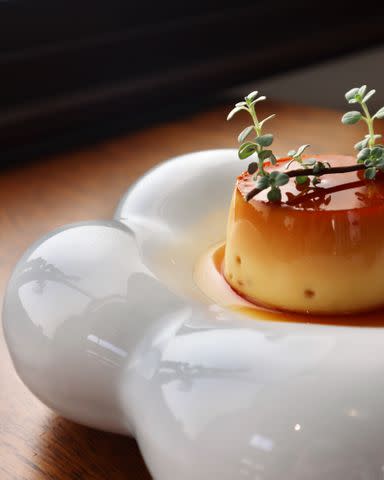
Courtesy of Butter in Whisper
Caramel pudding from dessert shop Butter in Whisper.The street food capital of the island is constantly reinventing itself in delicious ways.
Tainan is the street food capital of Taiwan and has some of the best bites on the island. With nearly 400 years of history, it is the country’s oldest metropolis, and at the heart of the food scene is a collection of family-owned food stalls that are constantly reinventing themselves while staying true to tradition.
Shangfu Snack Bar (No. 142, Section 1, Datong Road) is one such example. They’ve been slinging soft and unctuous pork ribs over rice for 50 years. While business has always been great, they took advantage of the slow pandemic days to completely revamp from a makeshift stall into a glistening brick-and-mortar with whitewashed tiled walls. There’s also Fu Sheng Hao (No. 8, Lane 333, Section 2, Ximen Road), a savory rice pudding vendor that’s been around since 1947. After decades of service, the third-generation owners have given the brand and its interior a much-needed 21st-century face-lift. In Tainan, chefs are constantly taking inspiration from the past, like the owner of Nuo Fu Rice Pudding, who started selling his mother-in-law’s rendition of sticky rice on the back of a bicycle in 2015 and has recently upgraded to a small corner store at the edge of the temple.
There’s a deep respect for the city’s buildings and architecture, which has inspired many new establishments. Award-winning cocktail bars like Bar TCRC (No. 117, Xinmei St.) and sleek lounges with an impressive record collection like Lola (No. 110, Xinyi St.) have sprouted up in the dilapidated buildings in the center of Tainan. Building Xinju (No. 69, Xinyi St.), located in a 140-year-old structure, serves elegant banquet-style dinners based on what’s in season and draws from an abundance of local shellfish and vegetables on the island. And newcomer Zyuu Tsubo (No. 22, Lane 158, Section 2, Zhongyi Road) — a 10-seat Japanese restaurant — doles out colorful donburi (rice bowls) in a once-derelict building that husband-and-wife team Chien Meng Yin and Chu Hsin Yi gutted and renovated from scratch.
In a city known for its traditional dishes, innovation stands out. Last year, the Michelin Bib Gourmand put an international spotlight on some of these trailblazers. One to watch is Principe (No. 34, Xihua St.), whose owner and chef, Cheng Yu Tsai, is a Tainan local who went to culinary school in Japan and cut his teeth at fine-dining establishments in France. The menu is an elegant accumulation of his experiences, featuring unexpected dishes like sea urchin with Taiwanese mullet roe and Brie drizzled with longan honey.
And while Taiwan is known for its rolling fields of oolong tea, for locals in Tainan, coffee is more often than not the beverage of choice. Gan Dan Cafe (No. 13, Lane 4, Section 2, Minquan Road) is particularly lovely, a cluttered yet charming shop in an alley with house-roasted coffee. In a nod to Tainan’s tropical climate and abundance of fruit, Butter in Whisper (No. 65, Lane 451, Gongyuan Road), which opened last April, serves refreshing iced coffees flavored with guava and feathery chiffon cakes with Taiwanese Aiwen mangoes. Both morning birds and night owls will adore Swallow (No. 27, Chongan St.); here, they offer single-origin coffee in the morning and transition into a cocktail bar at night, where drinks are garnished with touches like indigenous Taiwanese peppercorns and black sesame. — Clarissa Wei
Puebla, Mexico
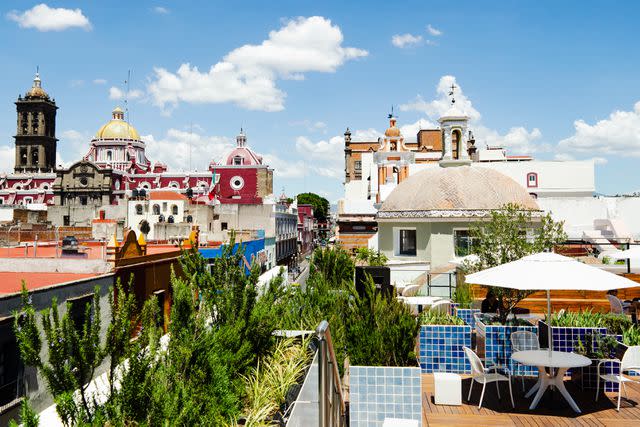
Mariano Fernandez
The rooftop café of art museum Museo Amparo affords a top-notch view of the many Baroque buildings and churches in Puebla.The city’s newest operators are neatly bridging the divide between tradition and modernity in delicious ways.
Among Mexicans, Puebla’s cuisine and architecture can be summed up in one word: Baroque. And while its bold and rich flavors mirror the drama of the city’s cathedrals, buildings, and artistic expressions, Puebla’s food has found a way to stay relevant, centuries later.
Puebla is home to many dishes that reflect cultural influences throughout the city’s history, the most iconic being mole. The mole specific to the city—mole Poblano—is made with ingredients that originated both with the Spaniards and ancient Mexicans, such as chiles, cloves, cinnamon, cumin, peanuts, almonds, walnuts, and pumpkin seeds. The resulting dish is prepared differently in every restaurant, in every home, and in every neighborhood in Puebla; there are as many moles as there are hands that prepare them.
If you had to try a singular one, El Mural de los Poblanos, located in a 17th-century mansion in the heart of the city, is the place to do so. Their recipe is slightly spicy, slightly sweet, and extremely complex, and it has been passed down from generation to generation. You should enjoy it with a Mexican wine and mezcal from their extensive selection while taking in the restaurant’s namesake colorful murals by artist Antonio Álvarez Morán that adorn the walls of the courtyard dining room.
For a more casual yet modern and hip poblano meal with views of the cathedral, try Comal. There, you can taste traditional street food such as meat- and veggie-stuffed breads called cemitas and pelonas, or chanclas, sandwiches dipped in red chile sauce.
Drinking culture in Puebla is as rich as its dining culture, and the drink of choice is mezcal. The best bar to get a good grounding in the spirit is El Sitio, where the drink list is so extensive, it looks like an academic dissertation. But don’t worry—the staff is well trained to help you navigate it. You can try mezcal made from the most common agaves like espadín or others that you probably aren’t familiar with, such as cirial or papalometl.
Famed chef Alejandro Ruiz’s restaurant Agualumbre is the place to try barbecued beef cheek and roast suckling pig. Ruiz is opening a new space inside Agualumbre called La Mezcalería, where you can learn the origins of this distillate through more than 80 different mezcals, cocktails, and tastings with master mezcaleros.
And if you want to visit a place deeply rooted in the culture of Puebla, then stop in at the iconic La Pasita (Av. 5 Ote 602, Centro), where you can drink in the colorful decorations while sampling the specialty drink: a caballito (tequila glass) of raisin liqueur with a cube of queso fresco submerged in it. And you can buy a bottle to take back home, of course. — Andrea Vázquez Azpíroz
Marseille, France
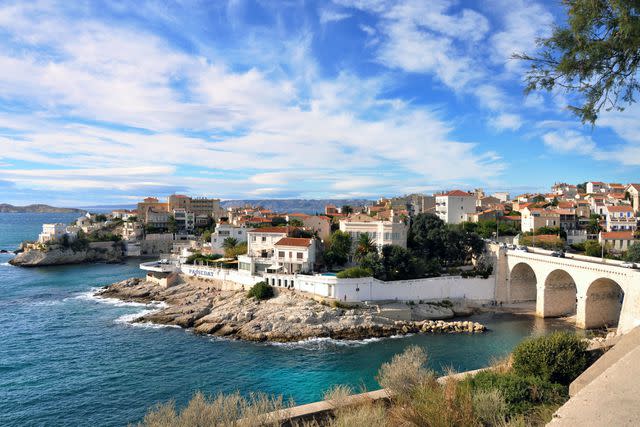
Charlotte Segurel / Getty Images
The city’s creative dining scene is fueled by creative contributions by women and immigrants.
Located on the Mediterranean and facing south toward Corsica, Algeria, and Tunisia (with ferries making those international crossings multiple times a day), Marseille is a town of blended flavors, where chickpeas, olive oil, and harissa are more common ingredients than wheat or butter. This is not a city of pretension, and neither is the food: Restaurants tend to be affordable, and service is disarmingly friendly. Long overshadowed by Paris and Lyon, Marseille is coming into its own, with women- and immigrant-led restaurants inspiring a new wave of French cuisine in the city.
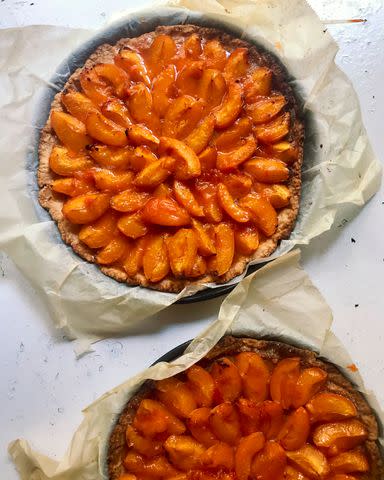
Take Limmat, for instance, located on the steps just off the graffiti-covered Cours Julien. Swiss chef Lilian Gadola serves unfussy, simple dishes from a small menu that changes daily (though you’ll always find a fish dish, several vegetable options, and two desserts, all made from the freshest ingredients). At La Femme du Boucher, housed in a former butcher shop, chef Laëtitia Visse wastes no part of the animal, creating housemade pâté, lamb fries, black pudding, pig’s trotters, and sausages, alongside dishes using more classic cuts. Chef Marie Dijon, along with two girlfriends, opened Caterine mid-pandemic. They refer to themselves as a cantine marseillaise libérée (a liberated Marseillais eatery) and cook reinvented Mediterranean classics like steak tartare with harissa and apricot, and fried meagre fish with aioli, all served alongside natural wines from the region. At Regain, friends Sarah Chougnet-Strudel and Lucien Salomon have opened a neo-bistro with a menu that highlights fresh, seasonal, regional ingredients. In addition to being led by women, all four of these restaurants have a shared set of values: They source from local farms and adhere to sustainable practices and zero-waste food policies.
France owes much of its contemporary culture to its history. Immigrants from former colonies across Africa and Asia have built vibrant communities and greatly contributed to the country. In Marseille, this feels the most palpable. Given the city’s Tunisian population is one of the most sizable in the nation, you’re likely to hear many patrons speak Arabic at Chez Yassine in the neighborhood of Noailles. Chez Yassine is an institution in Marseille—a canteen for seemingly half the city, where everyone chomps down on yolky brick à l’oeuf, crunchy salads, and hearty fish couscous. Following the Vietnam War, a small number of refugees settled in Marseille, leading to a vibrant Vietnamese restaurant scene as well. For the city’s best Vietnamese food, head to lunch-only Nguyen-Hoang, where chef Hanh Hoang cooks Vietnamese classics like bún riêu (fresh crab and tomato soup), bánh xèo (shrimp crêpe), and bò bún (rice noodles topped with herbs, veggies, and grilled meat), served by her son. — Sarah Souli
Venice, Italy

Alajmo Group
A four-course tasting menu at restaurant Quadri.The city’s culinary scene is experiencing a revolution.
You may be wondering what one of the most famous and visited cities in the world is doing on a list of the Next Great Food Cities. The truth is that while La Serenissima has always been a glittering postcard where time has stood still (oh, how romantic it is to sip a Bellini at Harry’s Bar!), gastronomically speaking, it’s famous more for misguided reasons and stereotypes—tourist traps, dusty menus, and crazy prices—than for the quality of its food offerings and the passion of its many restaurateurs.
So here is the answer: Venice today is a different city. It is experiencing a successful culinary renaissance sparked by the arrival of big names (and investments), and it has transformed itself into one of the new Italian food and drink capitals, with rich and diverse options to discover.
Take, for example, the return to Veneto of native son Riccardo Canella, former sous chef at Noma, who has put his dazzling talent and depth of thought to work for the legendary Belmond Hotel Cipriani, reworking the menu from breakfast to fine dining, at Oro. With regard to hotels, there is also Enrico Bartolini’s Glam in the Palazzo Venart, led by the excellent Donato Ascani; Dama in Ca’ Bonfadini, opened by Lorenzo Cogo; and also chef Norbert Niederkofler’s project Cook the Lagoon for Aman Venice.
Head to Venissa on the island of Mazzorbo, where you will discover a walled vineyard of Dorona di Venezia (an ancient native variety), a wine resort with a few cozy rooms, and the cuisine of Chiara Pavan and Francesco Brutto, who showcase sustainably sourced dishes in a garden by the lagoon. You will find the same values at Al Covo, a venue that has evolved intelligently, enhancing the best seafood and vegetables from Sant’Erasmo.
The Edipo Re is a historic and fascinating ship that has returned to sailing. From its deck, you can have a memorable experience exploring Venice from the water while sampling delicacies such as langoustines in saor sauce or baccalà mantecato, the traditional salt-cod dish, prepared by many of the aforementioned chefs who pop up on board.
And don’t be afraid to sit at the tables of the historic Gran Caffè Quadri in the shadow of the arcades of Piazza San Marco. The Alajmo family has restored its luster (adding a restaurant and a bistro) and also opened Amo, an all-day lounge in the T Fondaco dei Tedeschi luxury mall, and Hostaria in Certosa, a casual alternative for a summer evening. And of course, when in Venice, you must try cicchetti—typical small plates served with an ombra (small glass of wine) in bàcari (traditional wine bars). Visit Cantine del Vino già Schiavi or the more contemporary natural wine bar Vino Vero for some of the best examples in the city. — Federico De Cesare Viola
Surrey, Canada
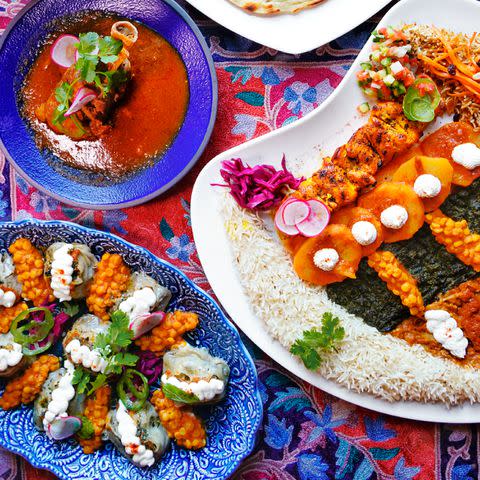
Courtesy of Afghan Kitchen
Plates at Surrey’s Afghan Kitchen.Unparalleled diversity puts this city’s dining scene on the map.
In this Vancouver suburb, hyperlocal regional cuisine is a delicious draw for the hungry traveler. The city is home to one of the largest Indian populations in Canada, interwoven with immigrants from Africa, other parts of Asia, and beyond, and that diversity is reflected in the city’s rich food culture. At restaurant after restaurant, you’ll find traditional meals made with love by the people who have come to call Canada home.
Some say celebrity chef Vikram Vij put Surrey’s food scene in the spotlight with the opening of his first solo restaurant, My Shanti, in 2014, which pays homage to his travels around India. Vij’s dishes offer a geography lesson, featuring flavors that nod to India’s varied regions, like Rajasthani chicken korma, soaked in a cashew garlic cream sauce, or Bangalorean goat stew, slow-cooked with cinnamon, cloves, and cardamom, with a kiss of heat.
There are smaller, equally satisfying spots, too. At Chacha’s Tandoor & Grill, you can dine on dishes unique to Delhi, like crispy golgappa shots–puffed puris stuffed with potato, chickpeas, and chutney—that come served in a miniature wooden wagon. Chatora serves sustenance from the tandoor, such as malai chicken tikka with tandoori paratha that’s layered and flaky. Foot-long dosas are a favorite at Kerala Kitchen, or, for a punch of flavor, try the beef ularthiyathu, a spicy, slowly dry-roasted aromatic masala cooked with curry leaves and coconut. Specific to the southern Indian state of Kerala, it’s a must-try dish you won’t find anywhere else in town.
At high-end Clove, the “Cocktail Fables” section on the drink menu is where you’ll find libations such as the Indian Alchemist, a cocktail comprising ghee fat-washed Havana Club Añejo 3 Años rum, fresh lime juice, orgeat syrup, and golden pear liqueur. Matching the cocktails in creativity and deliciousness are dishes such as beet murabba, served on stunning ceramics and plated as carefully as a painting.
The food in Surrey stretches far beyond the borders of India. Afghan Kitchen features kebabs cooked over coals and served with saffron tea, showcasing the best of the Herat province. At The Taste of Africa (10663 King George Blvd.), traditional Ghanaian dishes like jollof rice with baked tilapia and plantain fufu are made by an all-female kitchen. And for a mash-up of Mexican and Salvadoran cuisine, Guacamole Mexican Grill serves pupusas and arguably the best birria in town.
You can sample the city’s best spots on the self-guided Spice Trail, a mapped-out tasting tour that takes you through Surrey’s six neighborhoods to 70-plus restaurants, cafés, and bars with varied food offerings, ambiances, and culinary styles. — Binaca Bujan
La Paz, Bolivia

Julien Capmeil
La Paz is easily traversed by cable car.The culinary scene in this small South American capital celebrates indigenous ingredients.
Ask anyone in La Paz to pinpoint the event that kicked off the reinvention of the city’s culinary scene, and they’ll tell you about the day in 2013 when Danish restaurateur Claus Meyer (cofounder of the legendary Noma) opened his surprise second restaurant, Gustu, in La Paz’s upmarket Calacoto neighborhood. A decade later, chefs graduating from Gustu and Meyer’s associated culinary schools have gone on to put a modern stamp on Bolivian cuisine, showcasing traditional plates and endemic ingredients in thrilling new ways.
Case in point: chef Sebastián Quiroga’s Ali Pacha, the nation’s first upscale plant-based restaurant, located in the historic working-class Casco Viejo neighborhood. Quiroga offers tasting menus where, for example, Bolivian staples like quinoa and cassava are transformed into vegan mozzarella.
There are also Gustu-trained chefs behind Popular Cocina Boliviana, which puts a gourmet spin on the traditional Bolivian lunch stall (without charging haute cuisine prices), and Ancestral, where fish like paiche from the Amazon River basin or trout from Lake Titicaca are smoked on a central grill. Nearby Phayawi made the bold move of opening in mid-2020, but it has thrived thanks to local Paceños nostalgic for its grandma-inspired dishes, including charquekan, a plate of dried llama meat strewn atop corn kernels and native potatoes.
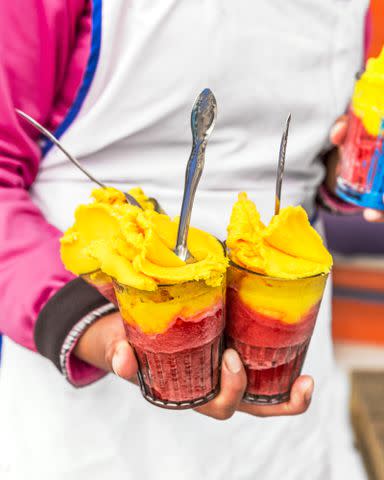
Julien Capmeil
Fruit sorbets are a common streetside treat.Elsewhere, bars like Hay Pan showcase silky Tannats from some of the highest-altitude wineries on the planet (in the Tarija region, bordering Argentina), as well as cocktails mixed with La República Gin (made from 16 Andean botanicals) or Singani 63 (director Steven Soderbergh’s local brandy).
Of course, you have to drink carefully: La Paz is the highest administrative capital in the world at 12,000 feet, which can make two glasses feel like four. A safer bet are coffee shops such as HB Bronze, which showcase the altitude-enhanced aromas of Bolivian beans. Sourced from the nearby cloud forests, they’re brewed into acidic coffees with highly concentrated flavors, thanks to growing elevations of 5,000 to 7,000 feet.
La Paz in 2023 is still a place of colorful chaos, but with a vast network of cable cars now soaring above the town, intracity travel is a breeze. Plus, you won’t find another metropolis of its size in South America with such a strong Indigenous identity—particularly in its cuisine. New boutique properties such as Met Hotel, opened in 2022 with a collection of local art curated by Mariano Ugalde, director of Salar art gallery, make the city more comfortable to visit than ever before. — Mark Johanson
Small cities with big food scenes
Brighton, England
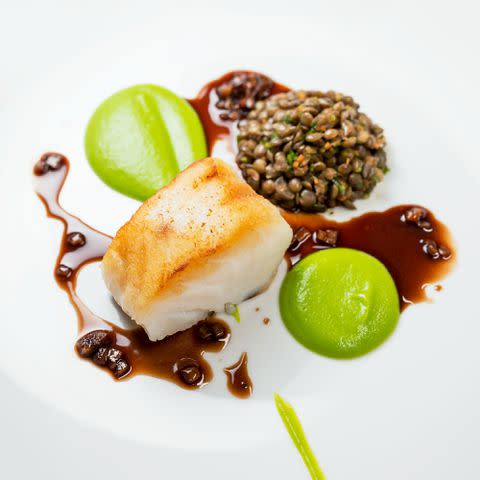
Xavier Buendia
Cod with pea puree, Puy lentils, and red wine sauce at The Little Fish Market in Brighton.Brighton began as a fishing village and found glory as a royal bolt-hole for the gluttonous prince regent, later King George IV. His Indian-inspired Royal Pavilion residence, with its gargantuan kitchen, still stands as a magnificent, if weird, reminder of his influence. Recently, that past is back on the plate, often with a twist appropriate for this bohemian city. The fish market Fish has been selling what the shop’s fleet sources in Hove Lagoon since the 1970s, but talented chef Duncan Ray at The Little Fish Market showcases those products’ true potential. Georgie Porgie would surely have appreciated The Chilli Pickle’s Indian inspiration, from masala fries with vindaloo ketchup to Kashmiri-style lamb cutlets. The team at Kindling combines open-fire cooking and home preserving with an emphasis on sustainability, while Isaac At’s young team shows what can be done with ingredients (including wines) sourced exclusively in Sussex. From the terrific wine list at Wild Flor to the small plates with flair at 64 Degrees, there is something for every glutton, including, at eat-in wine shop Ten Green Bottles, sharing platters and an array of wines fit for a king. — Nina Caplan
San Sebastián del Oeste, Mexico
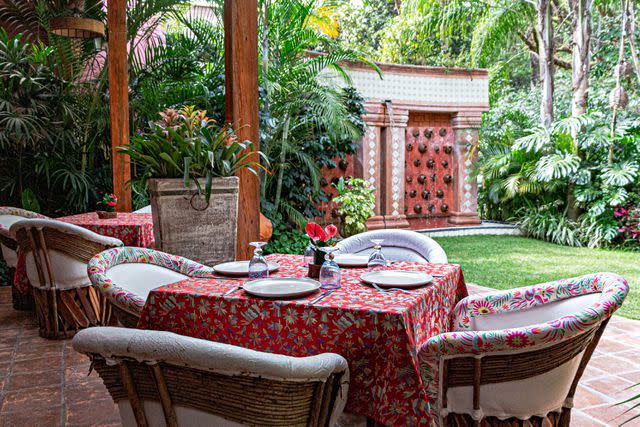
Omar Covarrubias
The charming grounds and garden at San Sebastián’s Jardín Nebulosa.San Sebastián (or San Sebas, to the locals) is a small town in which time seems to have stood still. Locals greet each other in the streets by first name, walk with their dogs off leash, and occasionally wave at tourists who have the good fortune to visit. A blooming culinary scene has made outsiders take notice, and new ventures such as Jardín Nebulosa have put the town on the map. Part restaurant, part botanical garden, and part farm, the property is in the middle of the forest, with biologist Mónica Rivas in charge of selecting which produce will make it to your table out of chef Nicolás Cano’s kitchen and mixologist Héctor Aldaba’s bar. (He uses raicilla, a distilled agave-based spirit; beer; or kombucha brewed on-site in the cocktails.) It’s worth visiting the local small-scale raicilla distillery Tesoro del Oeste in town to pick up a souvenir bottle on your way to Comedor La Lupita (General Aguirre 83) for excellent renditions of mole, beans, and refreshing aqua fresca in a lively, boisterous atmosphere. — Maria Forcada
José Ignacio, Uruguay
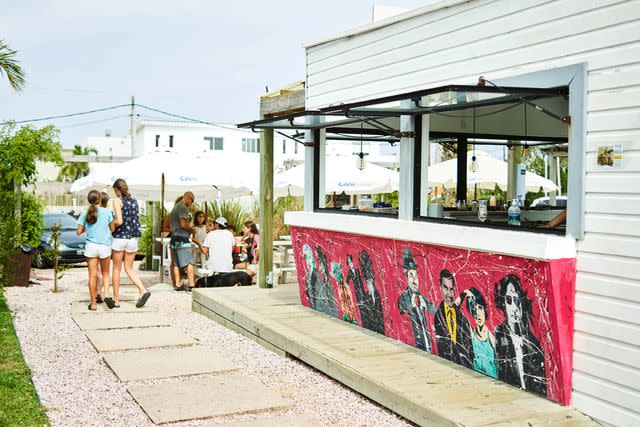
Chris Churchill
Breezy bars and chic cafés dot the village resort town of José Ignacio.In José Ignacio, power players from nearby Buenos Aires ease into their white linens to stroll barefoot down the beach. This tony resort on Uruguay’s Atlantic coast is also at the heart of a burgeoning wine region, spurred by the arrival of Argentinean billionaire Alejandro Bulgheroni’s lavish Bodega Garzón in 2016. Suddenly, you have new foodie hotels like Luz Culinary Wine Lodge, vino bars like Solera, trendy bookstore cafés like Rizoma, and farm-to-table restaurants like Salón No. 3, tucked into an antiques shop in the neighbor- ing resort town of La Barra, all joining longtime favorites Marismo and Parador La Huella on the beach-lined peninsula. Eccentric celebrity chef Francis Mallmann also returned to José Ignacio in 2020 after a 15-year absence with Chiringuito, a high-end twist on the region’s informal seaside stalls, where you can dine on the daily catch with your toes curled into the sand. Nowhere else in South America is so casually refined—or has this much buzz. — Mark Johanson
Clermont-Ferrand, France
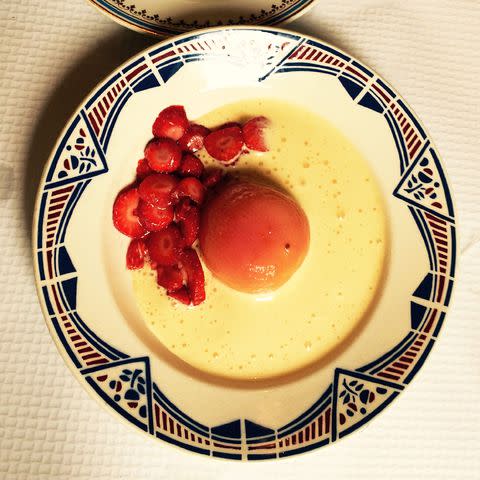
Stephen Heyman
A dreamy summer peach dessert at Le Saint Eutrope in Clermont-Ferrand.Despite its 13th-century cathedral, surrounding chain of UNESCO World Heritage–listed volcanoes, and strategic location at France’s center, Clermont-Ferrand has no fast train service from Paris. (That might be due to its status as tire company Michelin’s headquarters; the car will always be king.) As such, its impressive gastronomic credentials are hidden in plain sight. That’s despite the daily changing menu of terrific recipes at En/Vie, such as veal blanquette, duck à l’orange, or chicken with Champagne, which the Champenois owners will happily match to an impressive variety of bubbles. Or the skillful versions of traditional sauces (ravigote, beurre blanc) and wide-ranging list of local wines at tiny Mouffu, or some of France’s best couscous dishes—praise indeed, in a country with a substantial Maghreb population—at Le Jasmin (19 rue Saint-Dominique). There’s a near-perfect bistro, Le Saint Eutrope, which chef-patron Harry Lester has accessorized with an adjoining wine bar/shop, Le Quillosque, serving delicious small plates. If local pride is offended by Lester’s English origins, it will be soothed by Xavier Beaudiment’s Clermontois pedigree: His elegant Le Pré is the city’s only two-Michelin-starred restaurant. Clermont-Ferrand is truly the Michelin town. — Nina Caplan
Senigallia, Italy
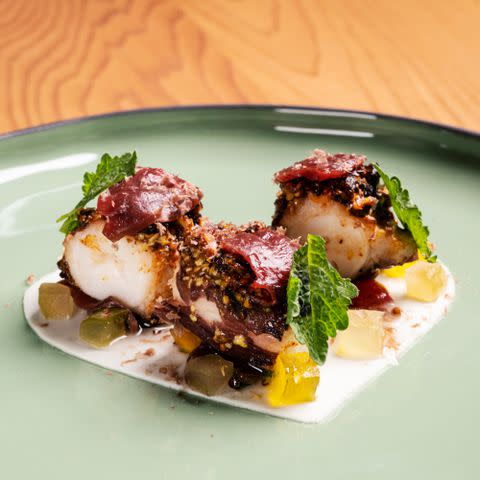
Courtesy of Madonnina
Chef Moreno Cedroni's seaside Clandestino restaurant in Portonovo.On the beaches of this small town on the Adriatic coast of the Marche region, one of the most creative (and friendly!) competitions in the contemporary Italian culinary scene has been going on for decades between chefs Mauro Uliassi and Moreno Cedroni. Separated by about four miles of waterfront, their brilliant restaurants — Uliassi on the eastern wharf and Madonnina del Pescatore in Marzocca — have a combined five Michelin stars between them. Their decades-long bid for excellence has led the way for astonishing growth in Senigallia’s small but dense gourmet district. You stumble upon something good at every turn: Paolo Brunelli’s gelato and chocolate, pizza “by the meter” at Mezzometro, artisan breads at Pandefrà, and cured fish at Anikò, another Cedroni outpost. It’s not all as avant-garde as Uliassi and Cedroni, though: In the historic downtown, you will find Mercato Trattoria Pop, with its modern ambiance and fresh and curated cuisine, and Trattoria Vino e Cibo, which is as simple and irresistible as its bread and mackerel. — Federico De Cesare Viola
For more Food & Wine news, make sure to sign up for our newsletter!
Read the original article on Food & Wine.

